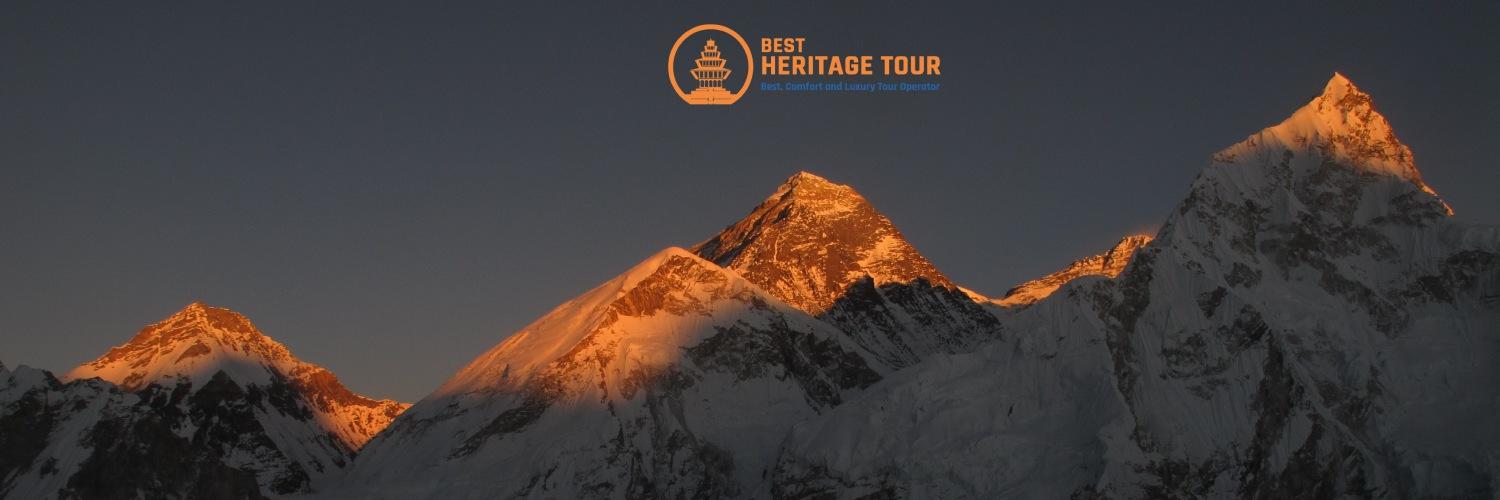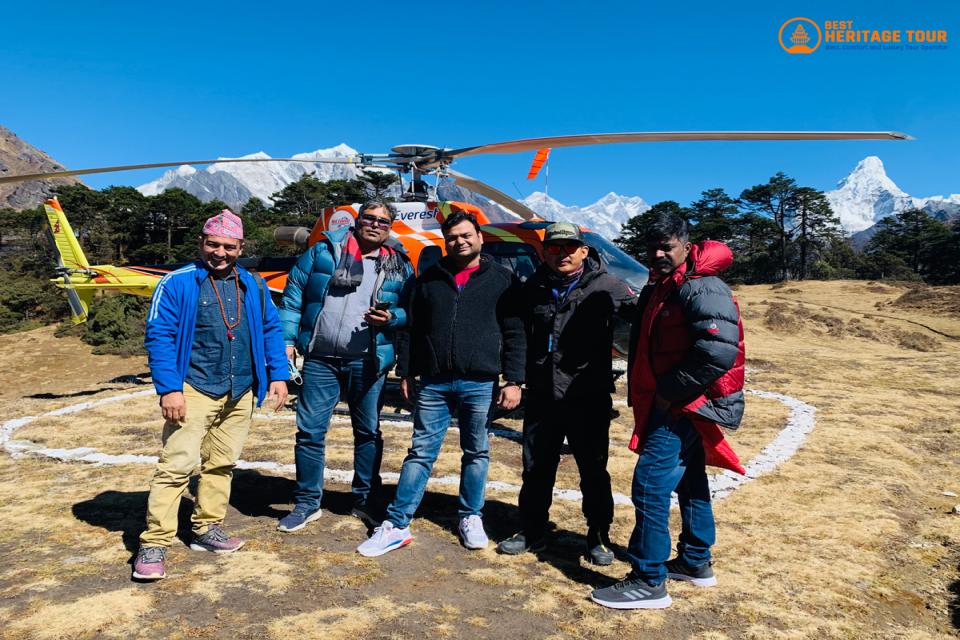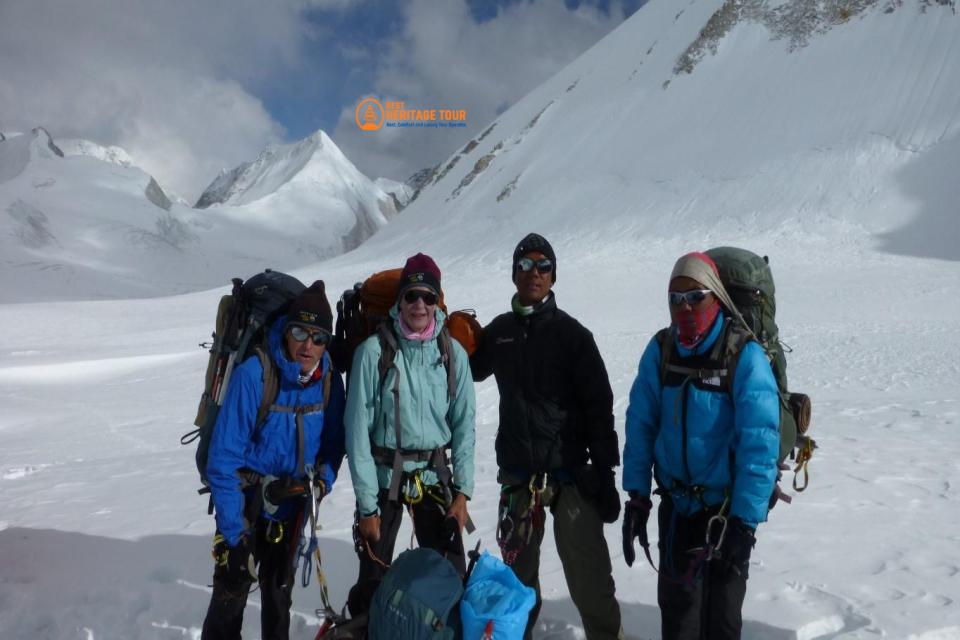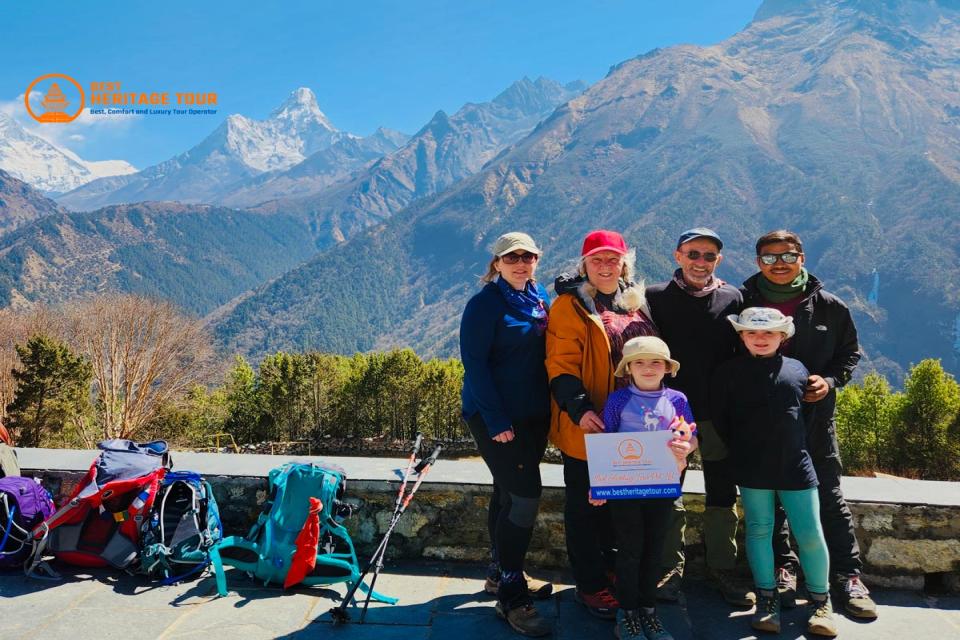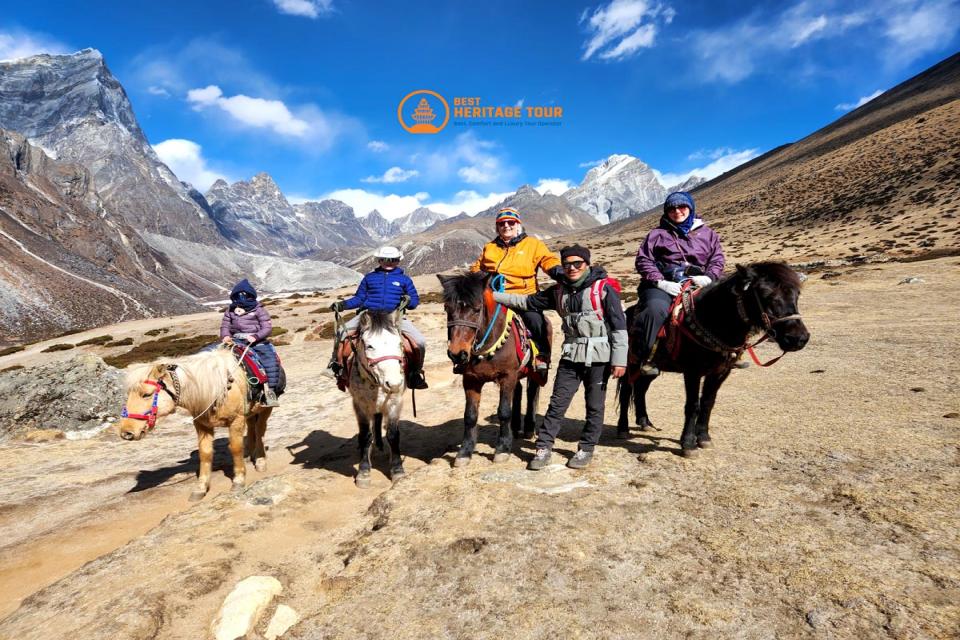Mt. Everest, the world’s highest peak, has captivated adventurers, trekkers, and nature lovers for generations. For those embarking on a trekking journey in Nepal’s legendary Everest Region, one essential question often arises: Which offers the best view of Everest, Everest Base Camp or Kala Patthar?
Both EBC and Kala Patthar are iconic highlights along the route, each offering a distinct vantage point of the mighty Himalayas. While Everest Base Camp is the symbolic destination for many trekkers, Kala Patthar provides a high-altitude perch that promises arguably the most breathtaking panoramic views of Mt. Everest.
In this guide, we’ll break down the key differences between these two viewpoints, comparing scenery, elevation, accessibility, and overall experience. Whether you’re eyeing the classic Everest Base Camp trek, the high-altitude Three Passes route, or the scenic Gokyo circuit, this comprehensive comparison, complete with weather tips and expert insights, will help you decide which destination offers the ultimate Everest experience.
Understanding the Everest Base Camp Trek
-
What is Everest Base Camp?
Everest Base Camp is the legendary spot where climbers prepare for their ascent to Mt. Everest’s summit. Situated at an altitude of approximately 5,364 meters (17,598 feet), EBC serves as a symbolic destination for trekkers and mountaineers alike. The trek to EBC is one of Nepal’s most iconic routes, attracting thousands of visitors every year.
-
Location & Terrain
The trail to Everest Base Camp begins in Lukla, famous for its challenging airport, and winds through Sherpa villages like Namche Bazaar and Tengboche, offering stunning views of snow-capped peaks including Lhotse, Nuptse, and of course, Everest. The terrain is a mix of forest trails, rugged mountain paths, and glacial moraines near the base camp itself.
-
Typical Itinerary & Difficulty
Most trekkers take about 12 to 14 days for a round trip to Everest Base Camp, allowing proper acclimatization along the way. The trek is considered moderate to strenuous, with altitudes requiring acclimatization to avoid altitude sickness. The EBC trek is accessible to fit trekkers, with good tea house facilities en route.
-
Accommodation & Facilities
Along the EBC trail, trekkers find numerous tea houses and lodges offering basic accommodation and meals. These facilities become sparse and more rustic as you approach the base camp. However, this infrastructure makes the Everest Base Camp trek manageable for many travelers.
-
Views of Everest from EBC: Pros and Cons
While standing at Everest Base Camp is a monumental achievement, the view of Mt. Everest from here is somewhat limited. The summit is partially obscured by Nuptse and Lhotse peaks. Trekkers get panoramic views of the surrounding Himalayas but the Everest peak itself is not the centerpiece from EBC. However, the energy of the base camp and the dramatic glacial landscape are unforgettable.
-
Best Time to Visit Everest Base Camp for Clear Views
The best trekking seasons to Everest Base Camp are pre-monsoon (March to May) and post-monsoon (late September to November). During these months, the weather is relatively stable, and skies are clear, offering excellent visibility of Mt. Everest and surrounding peaks.
Exploring Kala Patthar: The Iconic Everest Viewpoint
-
What is Kala Patthar?
Kala Patthar, which translates to “Black Rock,” is a small peak near Everest Base Camp. Standing at about 5,545 meters (18,192 feet), Kala Patthar is renowned as the best vantage point to witness Mt. Everest in its full glory. Unlike EBC, Kala Patthar offers unobstructed, breathtaking panoramic views of Everest and the surrounding Himalayan giants.
-
How to Get to Kala Patthar
Kala Patthar is typically a day hike from Gorak Shep, the last village before Everest Base Camp. After resting overnight at Gorak Shep, trekkers make a pre-dawn ascent to Kala Patthar to catch the sunrise and spectacular mountain views.
-
Trekking Difficulty & Altitude Challenges
The climb to Kala Patthar is steep and strenuous, with thin air due to the high altitude. It is often considered one of the most rewarding climbs in the Everest Region, but it demands good fitness, acclimatization, and mental resilience. Altitude sickness is a risk, so trekkers must take precautions.
-
Sunrise and Sunset Views from Kala Patthar
Kala Patthar is famous for its stunning sunrise views. As the sun rises, Mt. Everest and its neighboring peaks are bathed in warm golden light, creating iconic photo opportunities and unforgettable memories. The sunset views, although less popular due to timing, are equally magnificent.
-
Weather Considerations & Best Seasons
Similar to EBC, the best time to climb Kala Patthar is during the pre- and post-monsoon seasons when the skies are clearest. Cold temperatures and wind chill can be challenging, especially before dawn, so proper gear is essential.
-
Unique Photographic Opportunities
Kala Patthar offers unparalleled photographic perspectives of Everest’s towering peak, Nuptse, Lhotse, and other Himalayan giants. Many trekkers rank it as the top spot for capturing the classic Everest silhouette.
Comparative Analysis: Everest Base Camp vs. Kala Patthar Views
-
Proximity to the Everest Summit
Kala Patthar stands higher than Everest Base Camp and offers a closer, unobstructed view of Mt. Everest’s summit. While EBC sits at 5,364 meters, Kala Patthar is about 180 meters higher, which translates into significantly better visibility.
-
Panorama Quality and Visible Peaks
Kala Patthar provides a 360-degree panoramic view that encompasses Everest, Lhotse, Nuptse, and Ama Dablam. EBC’s view, though impressive, is more limited by the surrounding peaks and glacial formations.
-
Photographic Perspectives
For photographers, Kala Patthar is the dream spot. The iconic shots of Mt. Everest’s summit, especially during sunrise, can only be captured here. EBC offers more candid shots of the base camp environment and the trekking crowd but fewer iconic summit photos.
-
Crowds and Trekking Traffic
Everest Base Camp is more crowded due to its status as the final destination for most trekkers. Kala Patthar, being a side climb, sees fewer trekkers, especially early in the morning, offering a quieter and more serene experience.
-
Overall Experience and Altitude Impact
While EBC offers a sense of accomplishment standing “at the foot of Everest,” Kala Patthar delivers awe through its breathtaking views. The higher altitude of Kala Patthar means greater risks of altitude sickness but also greater rewards.
-
Safety and Acclimatization Considerations
Both spots require proper acclimatization. However, ascending to Kala Patthar should only be attempted after spending a night at Gorak Shep. Many trekking itineraries include Kala Patthar as a summit day after resting, to mitigate altitude risks.
Which One Should You Choose?
-
For First-Time Trekkers
If this is your first Nepal trekking adventure, Everest Base Camp offers an achievable goal with spectacular Himalayan scenery and cultural encounters. You get a solid Everest experience without the extreme exertion.
-
For Experienced Trekkers
Experienced trekkers and those seeking the best Everest views should definitely add Kala Patthar to their itinerary. The climb is challenging but rewarding, giving the ultimate mountain vistas.
-
For Photographers and Nature Lovers
Kala Patthar wins hands down as the prime viewpoint for photography and nature appreciation. The unobstructed, majestic views of Everest are simply unmatched.
-
Time and Budget Considerations
Including Kala Patthar typically requires at least one additional day and a higher physical effort, but no extra permit fees. For tight schedules or budget constraints, EBC alone remains a rewarding destination.
-
Combining Both for the Ultimate Everest Experience
Many trekkers combine both, arriving at Everest Base Camp and then making the early morning ascent to Kala Patthar. This way, you get the best of both worlds: the iconic base camp atmosphere plus the stunning summit views.
Tips for Trekking in the Everest Region
-
Permits and Fees
Trekking in the Everest Region requires permits such as the TIMS card (Trekking Information Management System) and the Sagarmatha National Park permit. These are essential for legal and safe trekking.
-
Acclimatization and Health Tips
Proper acclimatization is crucial. Plan the rest days in Namche Bazaar and Gorak Shep. Stay hydrated, avoid alcohol, and know the symptoms of altitude sickness.
-
Gear Essentials for High-Altitude Trekking
Layered clothing, sturdy trekking boots, a good sleeping bag, and trekking poles are essential. Don’t forget sunscreen and sunglasses for glacier glare.
-
Hiring Guides and Porters
Hiring experienced guides and porters not only supports local Sherpa communities but enhances your safety and enjoyment.
-
Responsible and Sustainable Trekking Practices
Respect local culture, avoid littering, and follow Leave No Trace principles to preserve the pristine Everest environment.
Conclusion
Both Everest Base Camp and Kala Patthar are unforgettable highlights of any Nepal trekking adventure in the Everest Region. While Everest Base Camp offers the historic and cultural heart of the climb with beautiful but somewhat limited views, Kala Patthar rewards trekkers with the clearest, most breathtaking panoramas of Mt. Everest.
Choosing between the two depends on your fitness, trekking experience, photography interests, and schedule. Ideally, combining both gives you the ultimate Everest trekking experience, standing at the foot of the world’s highest peak and witnessing its grandeur from Kala Patthar’s summit.
If you’re planning a Nepal trekking trip soon, consider the classic EBC trek, the adventurous Everest Three Passes Trek, or the scenic Gokyo Trek, all routes that bring you closer to Everest’s magic in unique ways.
No matter which you choose, the Everest Region promises awe-inspiring landscapes, rich culture, and memories that last a lifetime.
Ready to trek Everest Base Camp and Kala Patthar for the best Mt. Everest views? Trust Best Heritage Tour for expert guides, hassle-free permits, and custom itineraries in 2025/2026. Whether Everest, Gokyo, or Three Passes, we ensure a safe and unforgettable Himalayan adventure. Contact us today to start your Nepal trekking journey!
Book Now or Get More Information:
-
Phone/WhatsApp/Viber: +9779851149197 / +9779810043046
-
Email: bestheritagetour@gmail.com / info@bestheritagetour.com
-
Website: www.bestheritagetour.com
-
Location: Thamel Marg, Kathmandu, Nepal
Author: Best Heritage Tour
Date: 5th June, 2025

